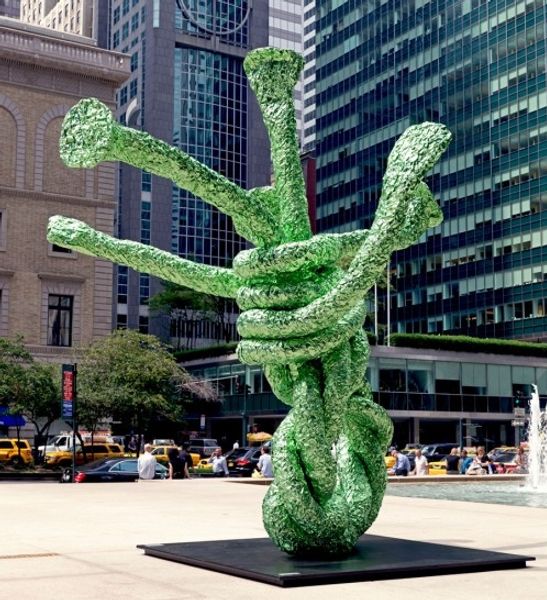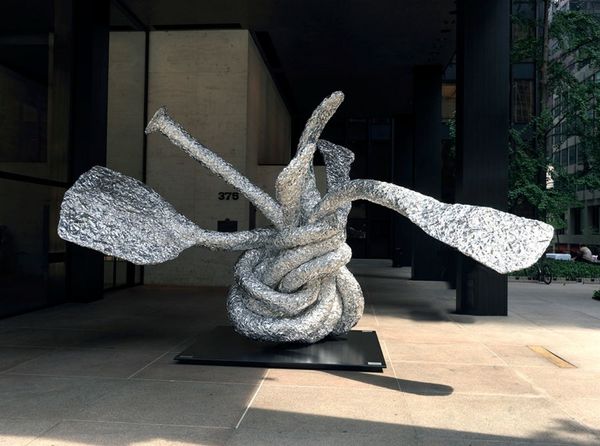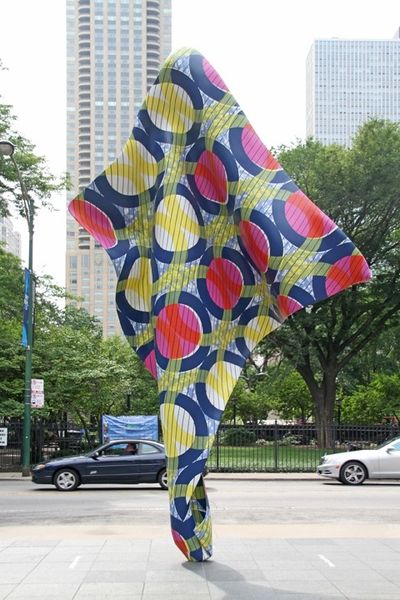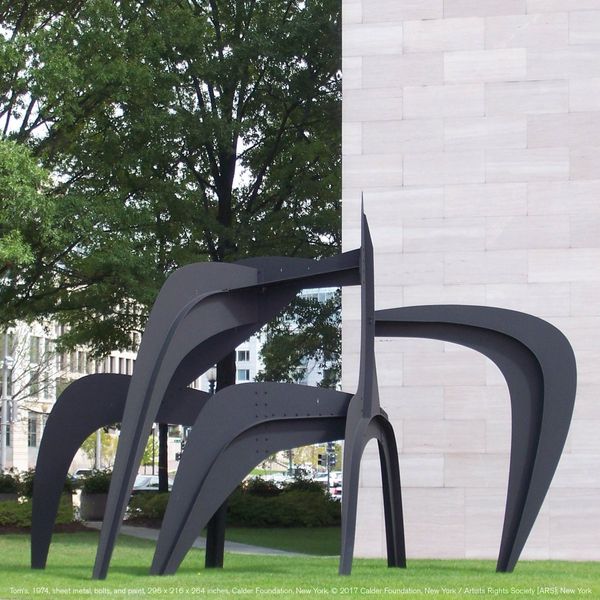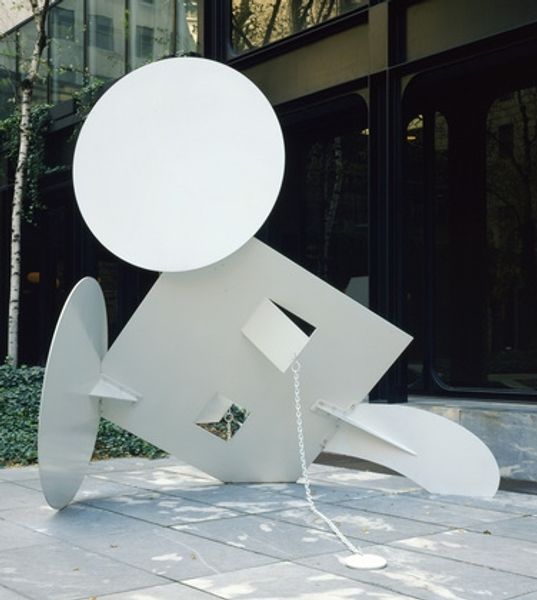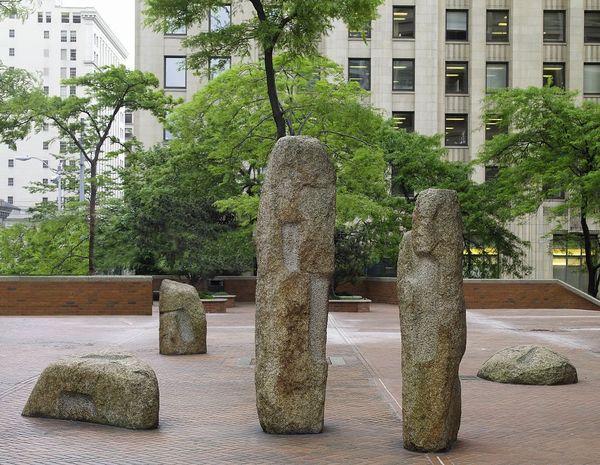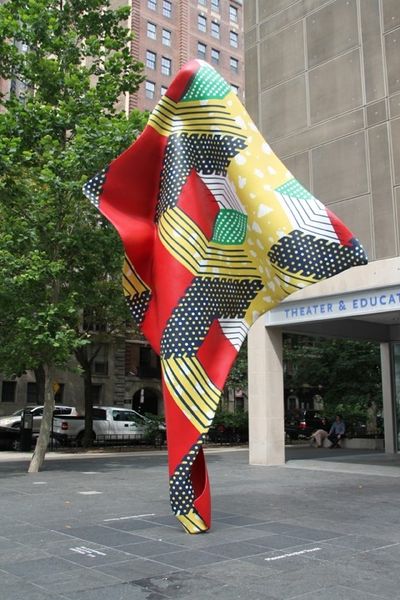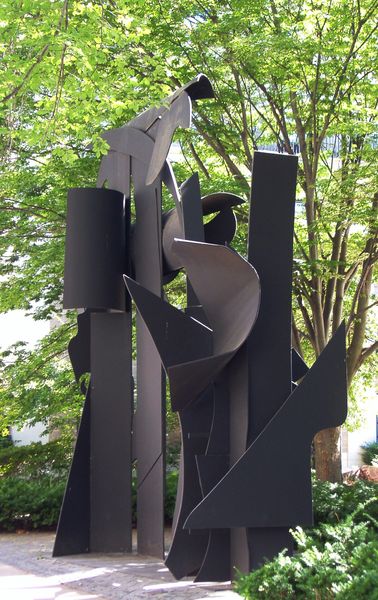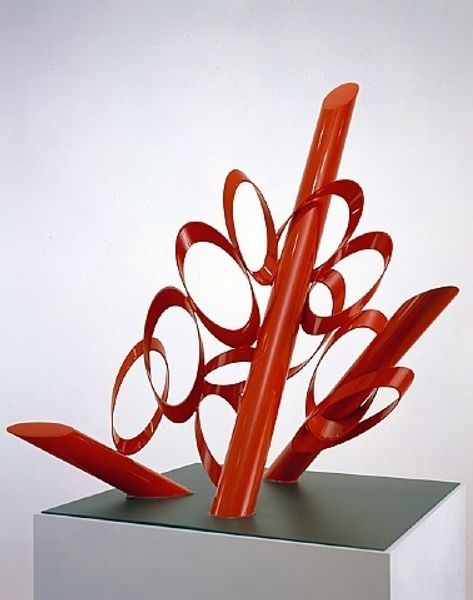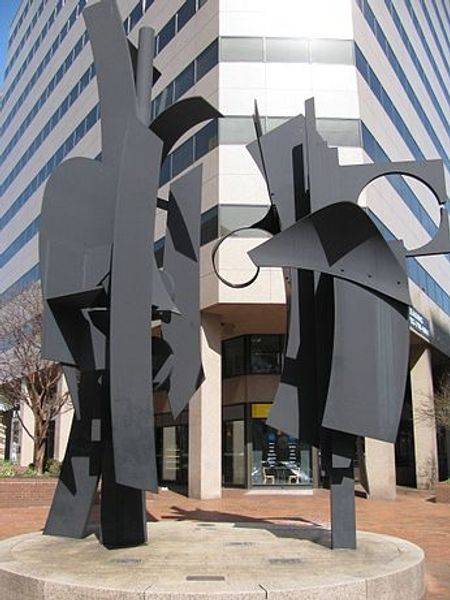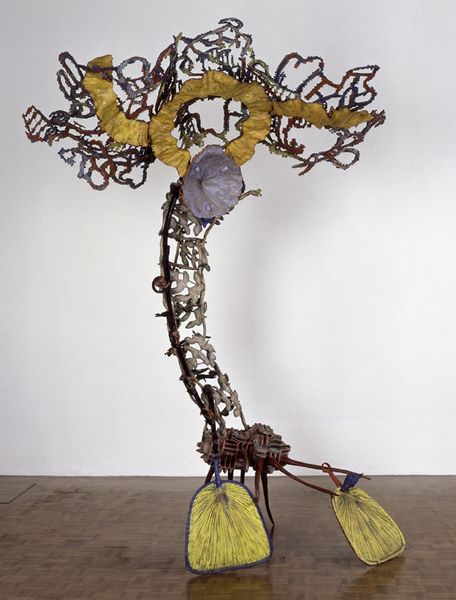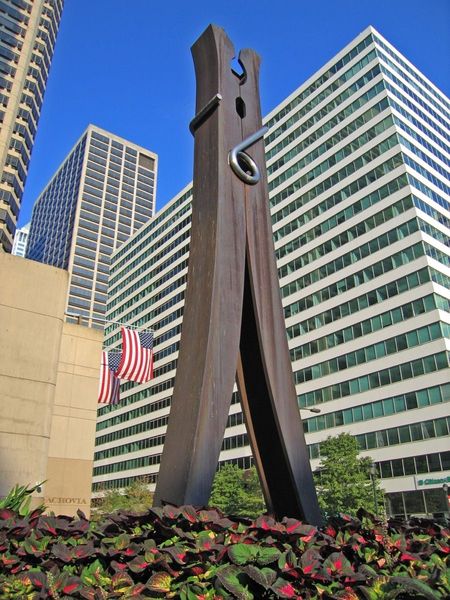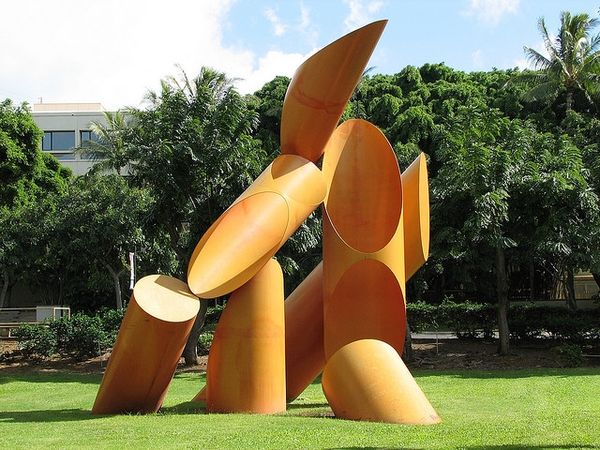
Copyright: John Chamberlain,Fair Use
Curator: John Chamberlain, known for his sculptures made of crushed automobile parts, gifted us "Pineapplesurprise" in 2010. What are your immediate thoughts on it? Editor: Intriguing. It looks incredibly dynamic, almost explosive, despite its stationary nature. The use of metal, the folds and creases – they catch the light beautifully and give it such tactile energy. Curator: The choice of material, in this case, the reflective metal, is so crucial to understanding Chamberlain’s work. He often explored themes of mass production and consumption, American car culture, and its impact on society. To me, the title "Pineapplesurprise" almost hints at the violence embedded within industrial progress, veiled under a seemingly playful exterior. Editor: That's interesting; I hadn’t thought of the social implications of car culture. But on the formal side, the way he's managed to twist and contort such a rigid material…it defies expectation! The surfaces become so rich, full of texture and nuanced variations. There's also a great tension between the grounded base and the soaring, almost unruly, tendrils reaching upwards. Curator: Indeed. And the very notion of 'crushing' is interesting from a feminist perspective. Who gets to crush, who is being crushed? It evokes so many considerations about power, destruction, and even regeneration as those metal fragments find new form as an artwork in a public space. It is almost aggressive, contrasting, however, the background and location of the work. Editor: I agree. The work gains a certain tension between its form and surface treatment against the classical facades of the surrounding architecture. In that way, it achieves an exciting visual disruption. The color in particular creates the feeling that we're walking amongst Roman ruins, although not yet overgrown by flora. Curator: The 'surprise', perhaps, is in confronting these underlying themes within a form that's simultaneously chaotic and undeniably elegant. It requires us to pause and ponder what we are celebrating, consuming, and ultimately, destroying in our pursuit of progress. Editor: Yes, seeing it prompts one to analyze forms while discovering surprising textures, all within the frame of reference it finds itself occupying within an outdoor space. It creates tension between itself and the landscape and architecture around it. Curator: Ultimately, "Pineapplesurprise" offers an open invitation for discussion, prompting us to think about its broader influence. Editor: Yes, what can we observe and interpret at the cross-section of forms, structures, history, and their environments.
Comments
No comments
Be the first to comment and join the conversation on the ultimate creative platform.
